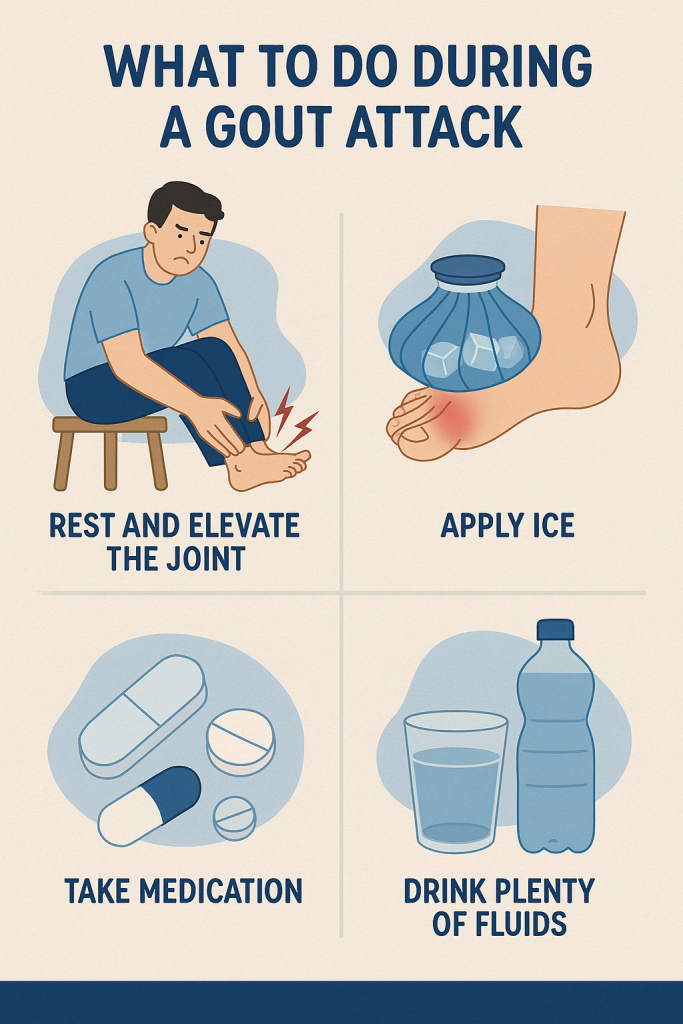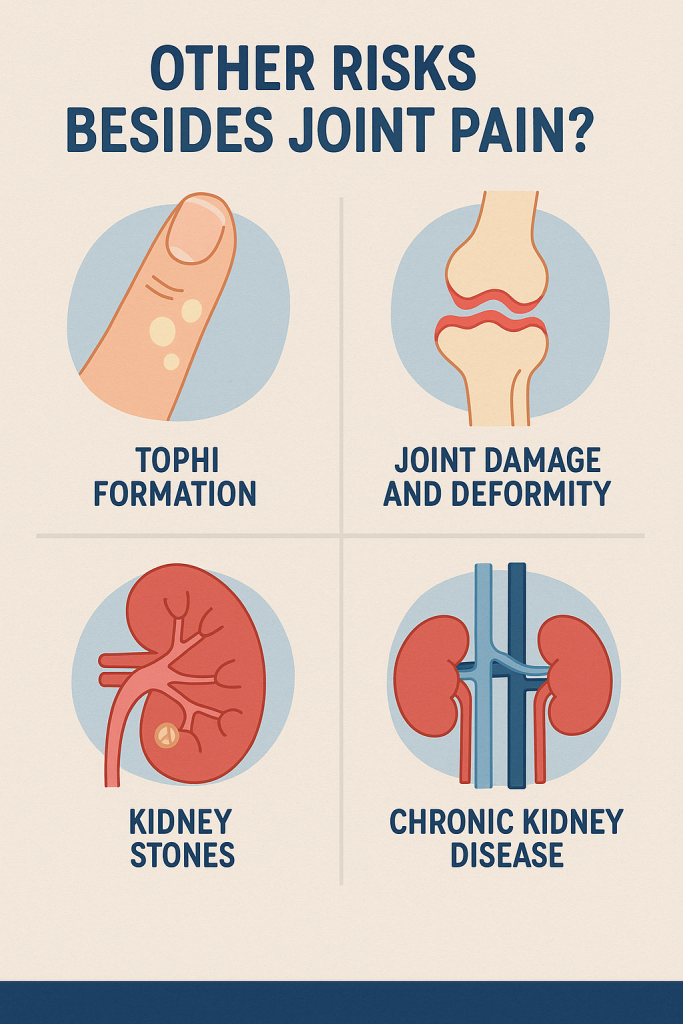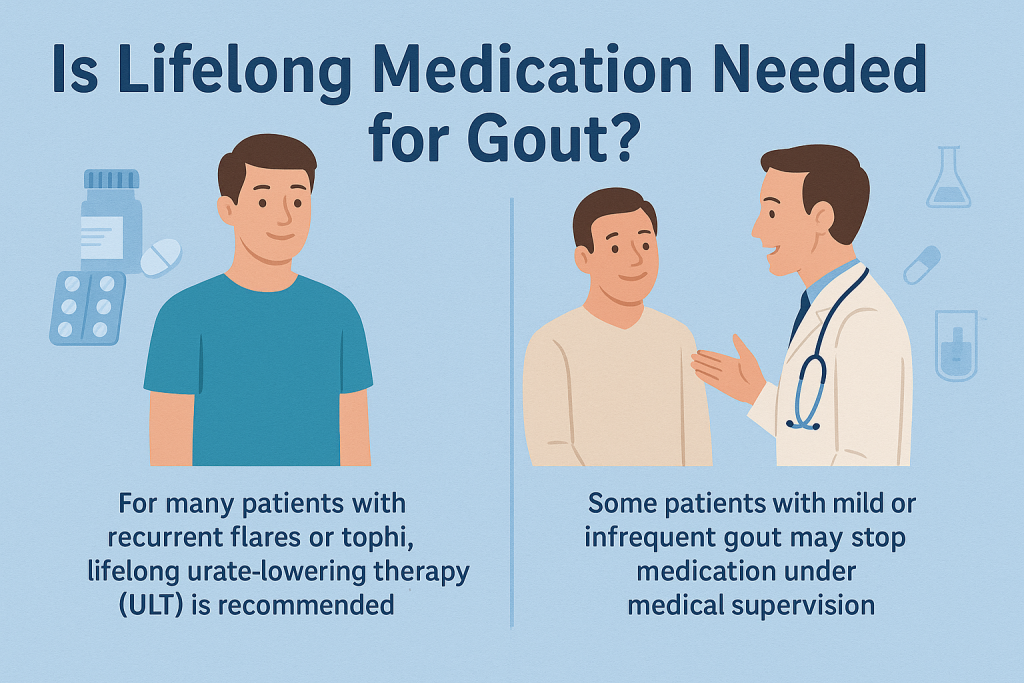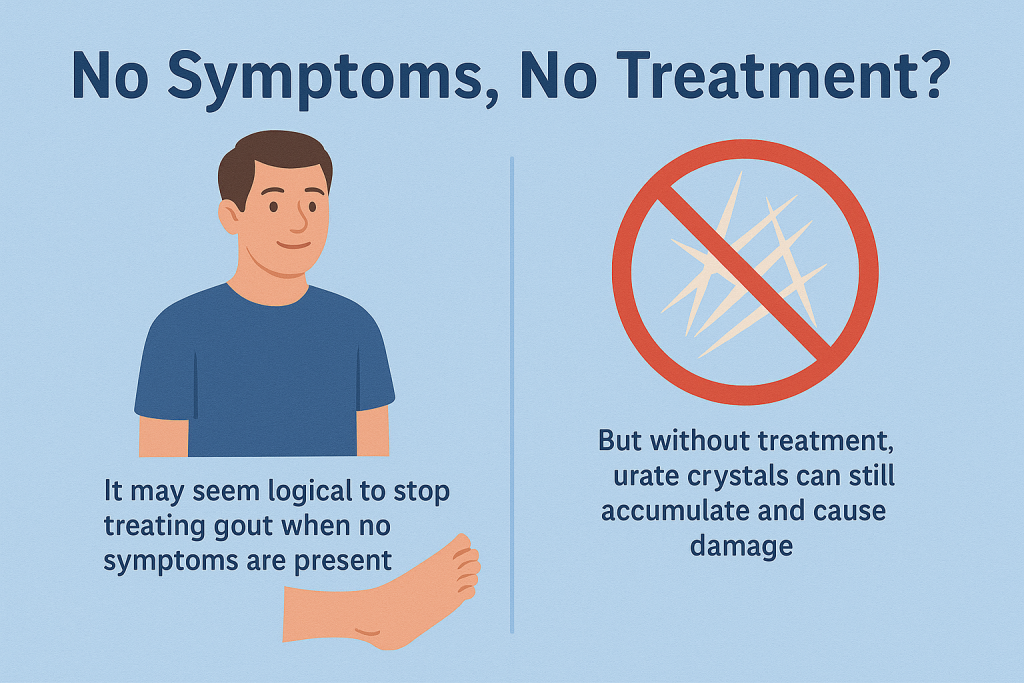Gout is spreading rapidly worldwide, affecting over 55.8 million people today, projected to reach 95.8 million by 2050.increasingly aff ecting younger adults.
What to do during a gout attack?

Rest immediately, elevate the limb, apply ice, and take medications like colchicine, ibuprofen, or steroids under medical guidance.
Other risks besides joint pain?

May cause kidney disease, kidney stones, uremia, hypertension, heart disease, and diabetes.
Safe uric acid levels?
Without gouty tophi: below 360 μmol/L;
With gouty tophi: below 300 μmol/L.
Lifelong medication needed?

Most patients require long-term or lifelong treatment. Proper management and lifestyle adjustments might reduce dosage, but never stop without medical advice.
No symptoms, no treatment?

Even without symptoms, gout patients have higher risks of hypertension, diabetes, and hyperlipidemia. Regular treatment and monitoring are essential.
Dietary advice?
Limit high-purine foods (organ meats), adopt a low-salt and low-fat diet, and avoid cold and irritating foods.
Are all seafood off-limits?
Limit high-purine seafood (e.g., sardines, anchovies); moderate-purine seafood (e.g., squid, sea cucumber) can be eaten in moderation.
Are all meats banned?
Limit red meat (beef, pork, lamb), moderate intake of white meat (chicken, duck, goose).
Recommended fruits?
Recommended: cherries, watermelon, strawberries; 200g cherries daily help lower uric acid. Limit fruits high in fructose, such as apples, oranges, bananas, lychees.
Suitable exercises?
Recommended: swimming, walking, cycling, 30 minutes each, 5 times weekly. Avoid exercise during acute attacks.
Effective water intake?
Drink at least 2000 ml daily, avoid sugary and alcoholic beverages.
Diet adjusted but uric acid still high?
About 80% of uric acid is produced internally, not just from diet. Persistent medication and comprehensive management are crucial.
Gout is chronic but manageable. With proper treatment and a healthy lifestyle, you can greatly reduce attacks and protect your health.
